Laying art bare with Barry Sykes
Vulnerability and humor turn unconventional spaces into creative playgrounds
The air is thick with heat, blurring the edges of the figures seated inside the sauna. Sketchpads rest on laps, pencils trace hesitant lines, and the hiss of water on hot stones punctuates the quiet concentration. Barry Sykes, both artist and orchestrator, moves through the room, a quiet presence guiding participants into the strange intimacy of drawing one another. In this confined, steamy space, imperfections are embraced, inhibitions melt away, and art takes on an unexpected fluidity.
For Sykes, settings like this—saunas, naturist clubs, offices, car parks, places outside the conventional realm of art—are where his work truly breathes. His projects often begin with a simple premise: what happens when people step outside their comfort zones? At the Oakwood Sun Club, he started with interviews but found himself pulled into tennis games, cyanotype experiments, and life drawing sessions with older naturists. These moments, rich with vulnerability and humor, became a cornerstone of his practice.
Sykes’ art is less about finished works and more about process—observing, experimenting, and creating in collaboration with others. Whether capturing the spontaneity of laughter yoga with naked participants or recording fleeting shadows in sunlight, his work reflects the tender, awkward, and often funny ways people navigate shared spaces.
Through his art, Sykes redefines creativity as a conversation between body, environment, and community, turning the unexpected into something worth looking at twice.
Interview with Barry Sykes, Dec. 2024
How has your work in naturist settings, such as Oakwood Sun Club, shaped specific pieces of your art? Can you share some examples?
It was never meant to happen! I hadn’t planned to make any artwork at the Oakwood naturist club. I was just going to interview the club members, as they had been identified in a project called ‘Radical Essex’ that looked at pioneering alternative communities in this rather underappreciated English county. The first naturist club in England was in Essex in 1924, and though it only lasted a couple of years, it’s closing spawned several other replacements, then many more over the decades, though now just three are left. Two of these clubs declined to speak to me, I think wary of publicity as naturism is still a very niche, misunderstood activity in the UK, but the third club I approached, Oakwood Sun Club, were immediately very welcoming.
On my first visit to Oakwood I walked around fully dressed, asking questions, chatting with these naked, sunbathing pensioners (most members are between 50 & 80 years old) but quickly felt out of place. When I was invited to make up a doubles for tennis that meant I had to strip off too, and the demands of a physically competitive game quickly forces you to forget your modesty or awkwardness, as you dart around the court chasing a tricky shot. And in that moment something changed and ...
But back to your question, using art making to help understand a new, complex situation is really my favourite way to make work. Finding new ways to record or analyse the experience. I’m a very analogue, tactile thinker, so my artistic methods are often drawing, cutting, moving, moulding, writing, anything with my hands. And I always find it fruitful to combine things that don’t normally go together, or use them in the wrong way, as a kind of overlapping lens to see things anew.
I was thinking a lot about being sensitive to the members privacy, how to reveal but also obscure. So I was drawn back to the 1920s when this all started, the birth of Modernism, the Bauhaus in Germany, and radical experiments in photography. So I turned a corner of their sunbathing lawn into a cyanotype photography studio, where chemicals react to the sun’s UV rays leaving a permanent trace of shadows on treated paper. Firstly by spelling out words in grass torn from the lawn, then the outlines of books from their library, to large prints of my discarded clothes or a circle of our feet as we stood chatting as the image exposed.
Now, this form of photography is incredibly hard to predict, due to the vagaries of the sun, clouds, bodies, and chemicals. But what this, and working amongst these older nudist bodies taught me, was a very persuasive sense of embracing and valuing flaws, variation, and ungainly imperfection. To cherish the surprise, rethink the disappointment, of an unexpected outcome.
Your projects often appear to explore vulnerability and openness. How has naturism influenced the way you portray the human body in your art? Are there particular works that reflect this?
A lot of my projects are about things that can be seen as extreme and benign at the same time. Previous projects have dealt with the police, forgery, sauna, fake laughter - and social nudity operates in a similar way. Many of the older nudists I spoke with couldn’t conceive why anyone wouldn’t enjoy stripping off, why some could find it a challenging prospect. To be honest I’m probably still somewhere in the middle. Though I now see there is something fundamentally enriching in seeing each others’ imperfect bodies, how we age, how we vary, how we arrange ourselves when completely relaxed, and in the value of these self-policing spaces where trust and equality have somehow been mutually agreed.
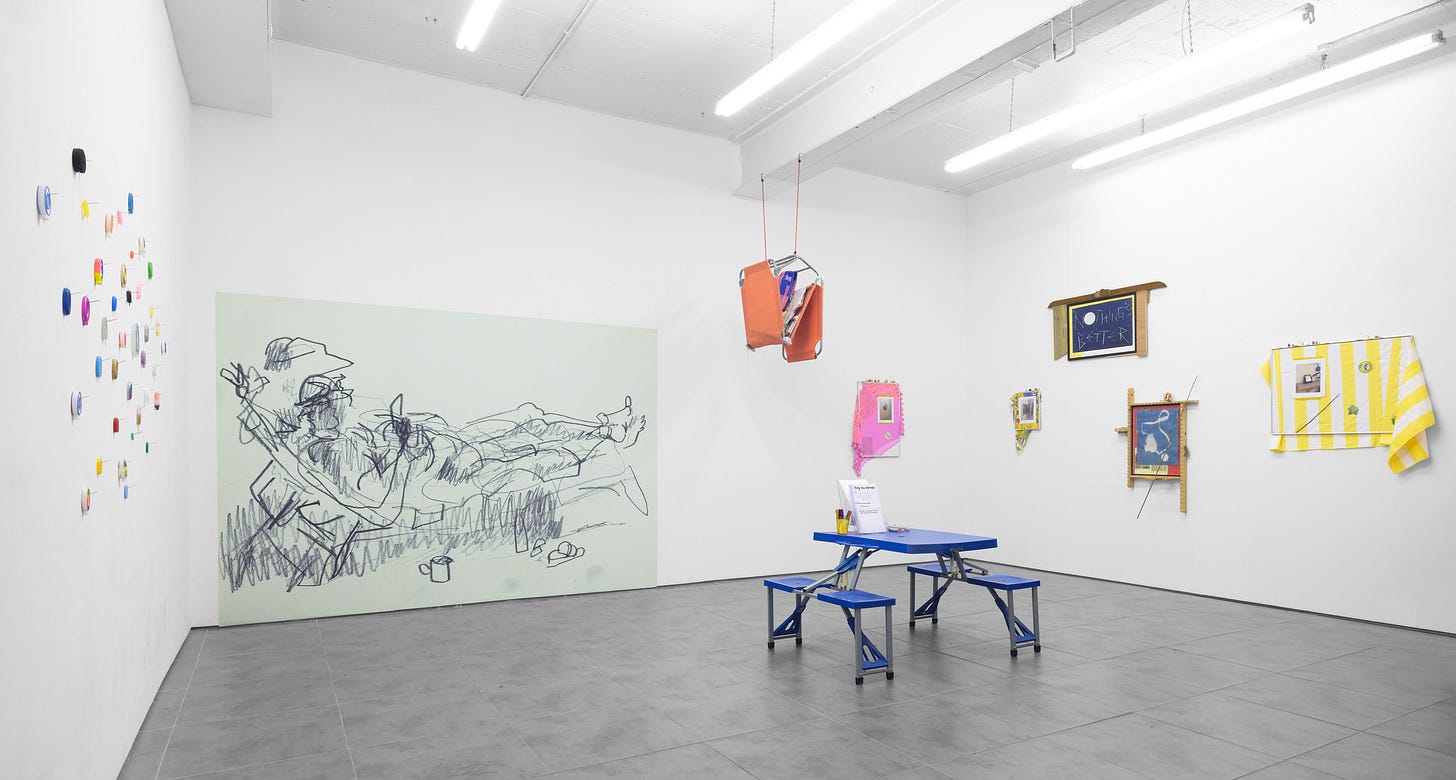
On my last official day at Oakwood I decided to try a much more traditional method of recording them, by simply drawing some of the people I’d got close to during that time. I used the old life-drawing technique where you resist looking down at the paper until you’ve finished, letting your pencil skid across the paper, hoping the shapes you’re making somehow reflect the subject you’re staring at. More seeing and not seeing. I made about twelve across the afternoon and they are some of my favourite work from that time. I also made very high resolution scans of each drawing and made some as huge billboard prints to better study the marks I made, the figures now larger than life.
You’ve done life drawing sessions in saunas. What inspired you to start this practice, and how do these sessions work?
As I say, I often find it really fruitful to force two incongruous elements or experiences together, that shouldn’t work, to see what happens. Letting it find its own path, by seeing how people choose to respond to this odd proposition. I’d got back into drawing with those portraits at Oakwood, and had previously fallen for sauna after doing art projects in Scandinavia and Germany. Up until recently there wasn’t much of a sauna culture in the UK, so I liked how it was still an unusual activity here, going against a lot of very British reserve.
I started with The Sauna Reading Group, where we’d discuss a short text that loosely related to sauna, say about solitude or illness or out of body experiences. This was a fascinating way of not just understanding the text more but also the dynamics of the sauna space, how we dealt with the heat and each other. I’ve since tried to use the sauna cabin as this hot and sweaty experimental space for all sorts of social gatherings.
Your work often involves creating in non-traditional settings, like saunas or naturist spaces. How do these environments impact your creative process, and what kind of unexpected inspiration have you found working in these unique contexts?
It’s a way of unsettling people. To help us all gain a heightened awareness of how we’re interacting, what the unsaid rules are of each space. And then by proposing something unusual again to do in this setting, hopefully even more will come to the surface. I think everywhere has the potential to be interesting, so it’s a way of looking closer at something.
These settings are also chosen to be a challenge to me, just on the edge of what I can deal with. But by creating a generous, welcoming framework, that is always open to failure and the unexpected, even difficult situations can become pleasurable and playful.
Humor seems to play a role in much of your work, and nudity can be inherently funny. How do you balance humor with the more serious or philosophical aspects of naturism in your art? Could you share examples where this balance was particularly tricky or effective?
I’ve always thought of laughter as a really useful feedback measure, albeit one of the body’s immediate unconscious responses. And we laugh for all sorts of reasons, from embarrassment, nervousness, surprise, to mock, to connect, to reassure. And yet I’m also fascinated with how hard it is to unick each laugh’s exact motivation. Essentially I use humour to get people onside, to open up, and how even one person’s laughter can relax the rest of the group. My Laughter Yoga practice has been a really useful way to examine this. Literally isolating the physical act of laughter, reducing it down to the breath, a sound, and then pushing it into all sorts of directions with a group of people. You have these ‘narrative’ laugh exercises, like ‘Laugh high and laugh low’, or ‘laugh and wave’, people can’t help joining in. We make fools of ourselves, in a group of friends, colleagues or strangers, and you only realise the endorphin rush you’ve triggered in yourself when it’s finished.
This project is about attempting it in different settings, where loud group laughter might not usually be heard – so schools, offices, museums, town squares, and also on a couple of occasions, a naturist club. What was wonderful about trying it with a group of naked people was you could you see the laughter as this whole body, physical reaction, moving from the lungs to the shoulders, limbs, jaw, eyes. But also that here was a group who had obviously already dealt with some abandonment of social restrictions, already more carefree in their bodies, but still had the same tentative reservations about this form unrestrained group hedonism. This double layer of letting go felt like a really special moment.
Any other thoughts about nudity you’d like to share?
I suppose I’ve always been intrigued by the structures around organised, official naturism. That aside from all the talk of it offering a moment of ‘freedom’ - in fact if you ask anyone to describe the experience this is the word that most often comes up – it still takes such a lot of restrictive infrastructure to make it possible. The high fences, access codes and etiquettes of a naturist club, or in the signposted section at the far end of the beach. This is a very boxed-in form of liberation. And yet you can also see these rules and regulations as acts of care too, as the painstaking, nurturing efforts required to preserve the possibility of such a simple yet complex, pleasurable pastime. 🪐





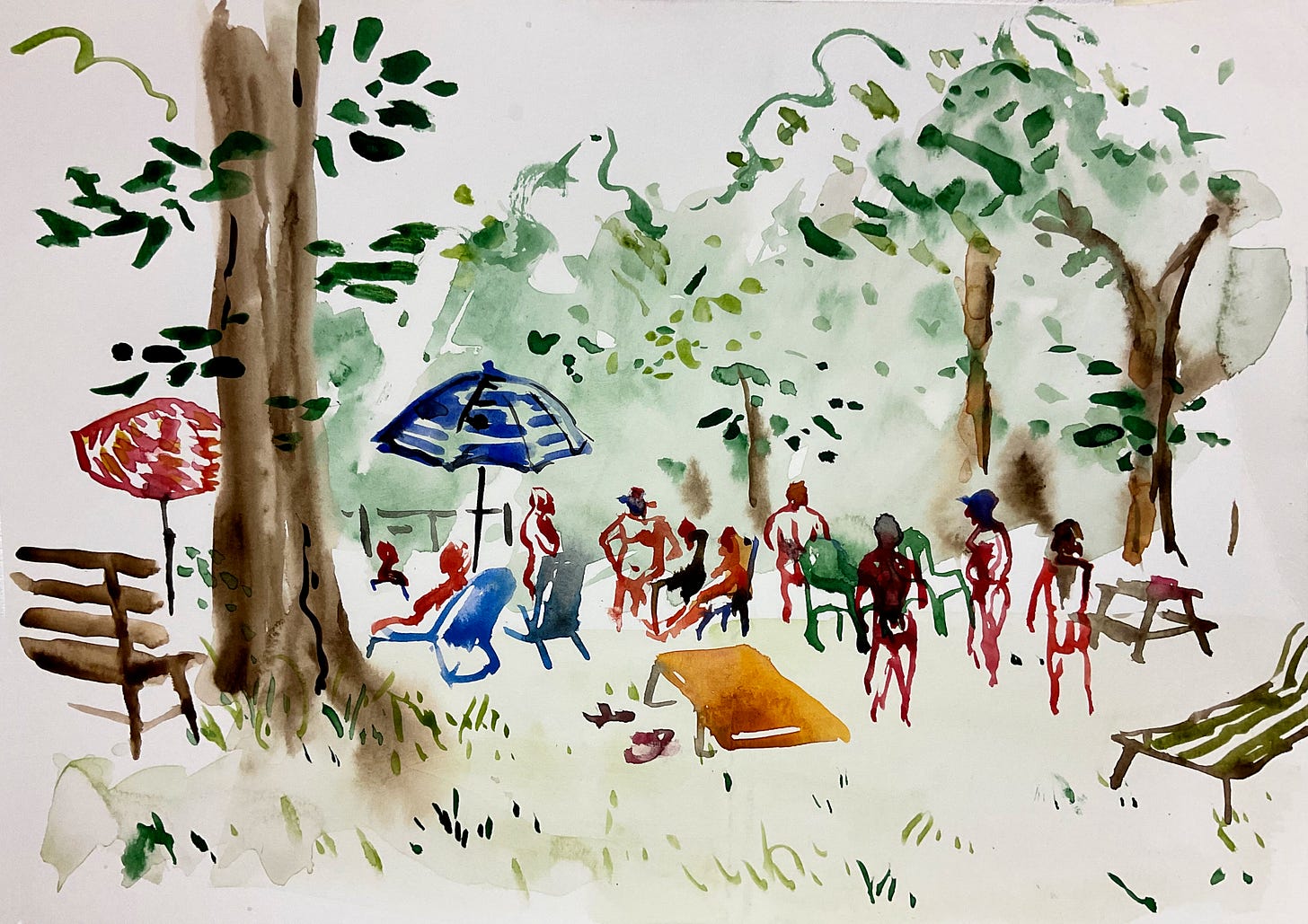

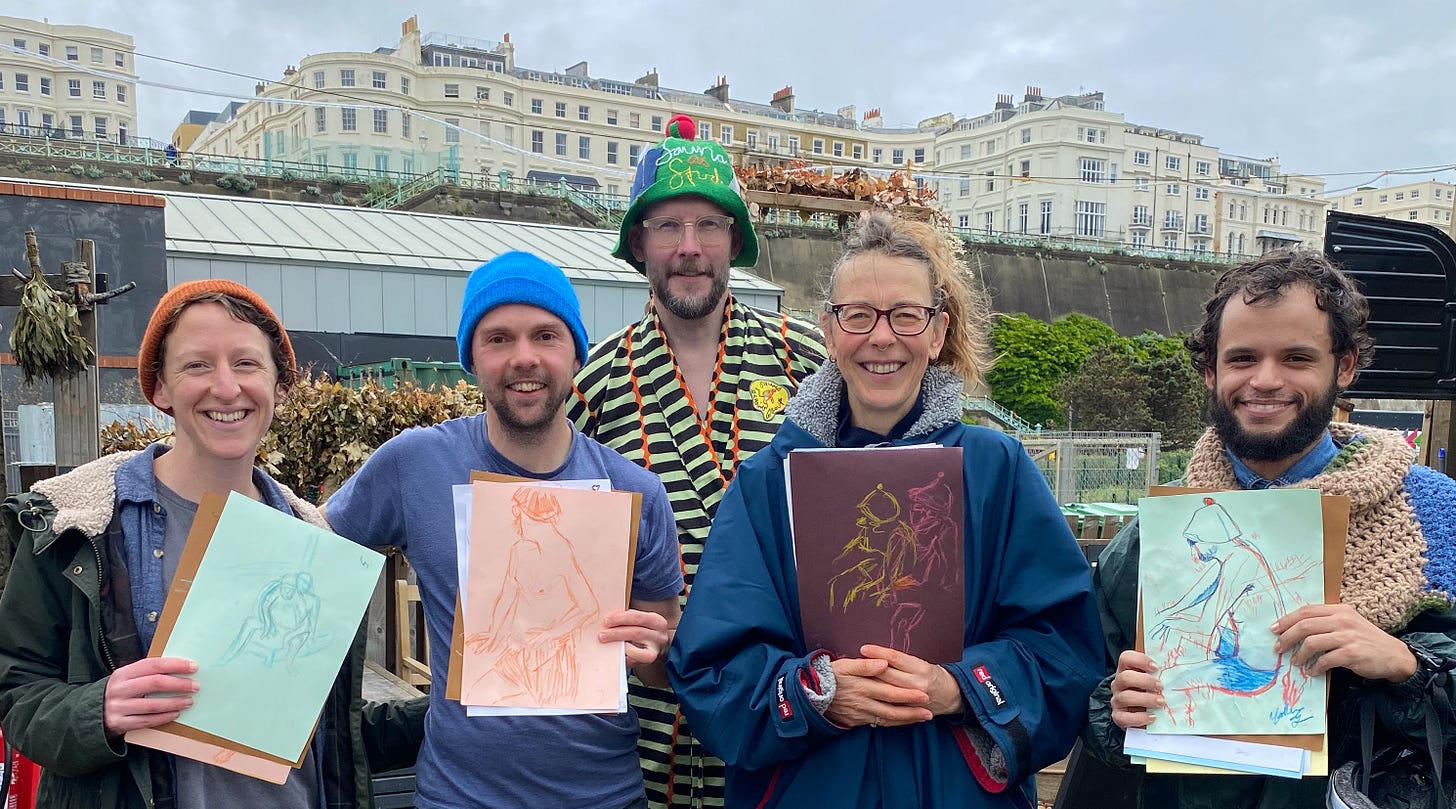
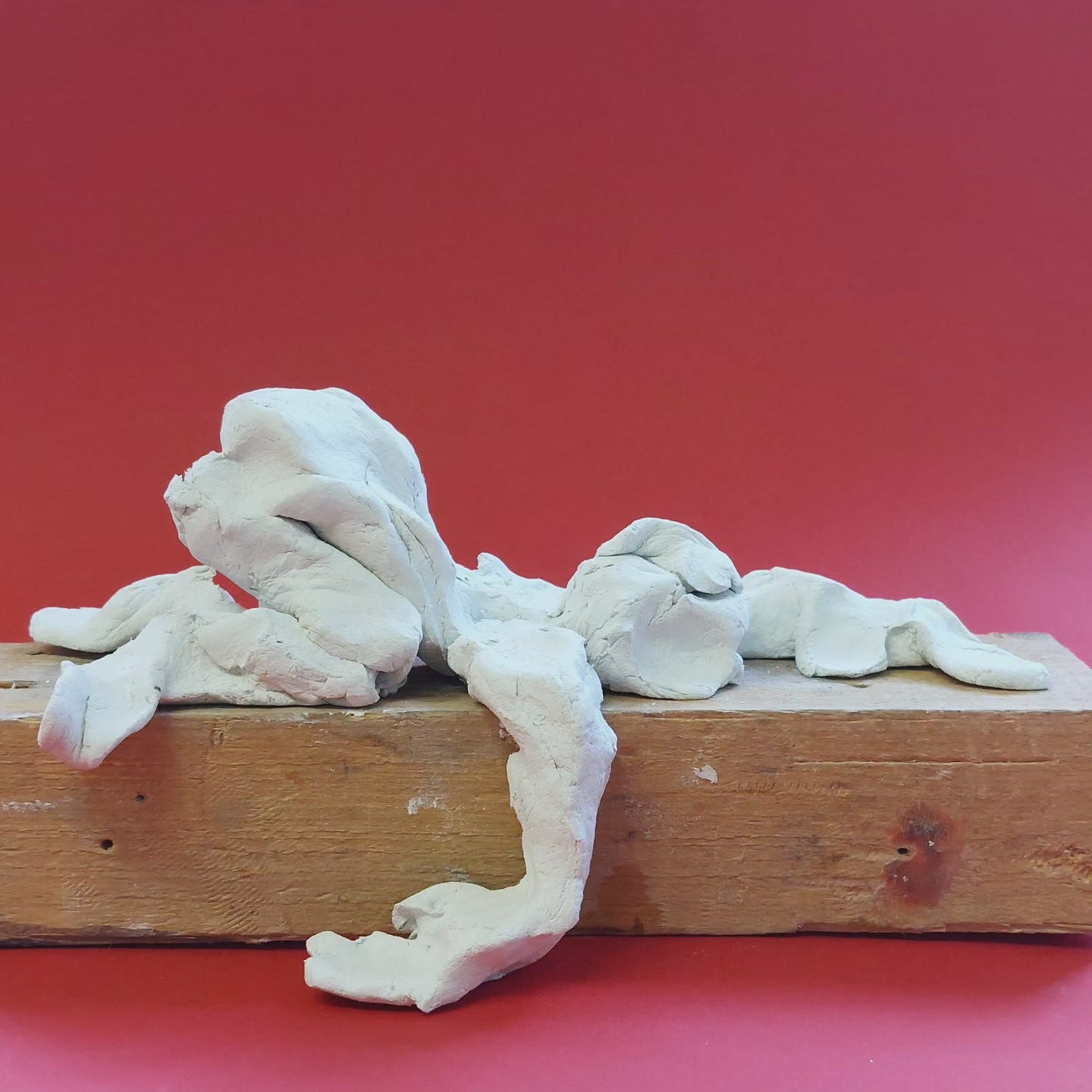
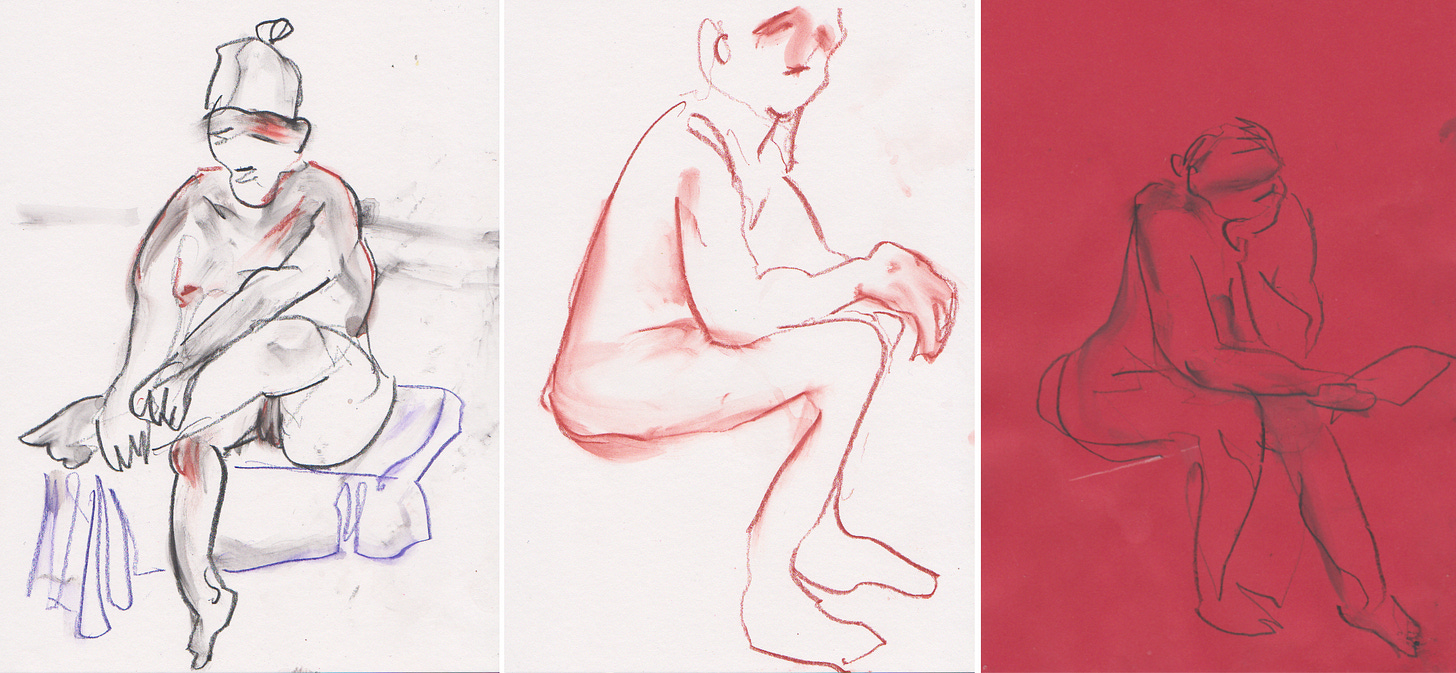
My wife and I went to an open day at Oakwood many years ago, unfortunately she was already going through the menopause and shortly after stopped public nudism, and because of the difficulty of getting there by public transport I had to give up the idea of hopefully joining.
Seemed a really nice club, and the people we met were all friendly.
Good to see that Barry is still progressing with his art projects - he was very helpful when I was researching the Moonella Group at Wickford, Essex - this is the club he refers to his first answer.